With Rocksteady Studios’ Batman Arkham trilogy solidifying the status of being some of the best superhero video games ever, all eyes were on what the studio would do next. In 2020, we got our first look at their next game, Suicide Squad: Kill The Justice League, which was promised to be a spin-off from the Arkham franchise. However, despite its ties to the beloved franchise, gamers were unhappy with the direction Rocksteady were going in. KTJL showed off some of its gameplay during a PlayStation State of Play in 2023, revealing that the game was a live service co-op shooter.
Think of your Destinys, The Divisions or even more close to home, the now-delisted Avengers game. Titles that are designed with endless replayability in mind and of course monetisation. Now, live service games have a place in the industry; some may have predatory monetary practices that hinder gameplay experiences, but there are some genuine success stories for both the player and the companies putting them out.
So where does Suicide Squad: Kill The Justice League land in all this? Well, the answer may just be in its title.
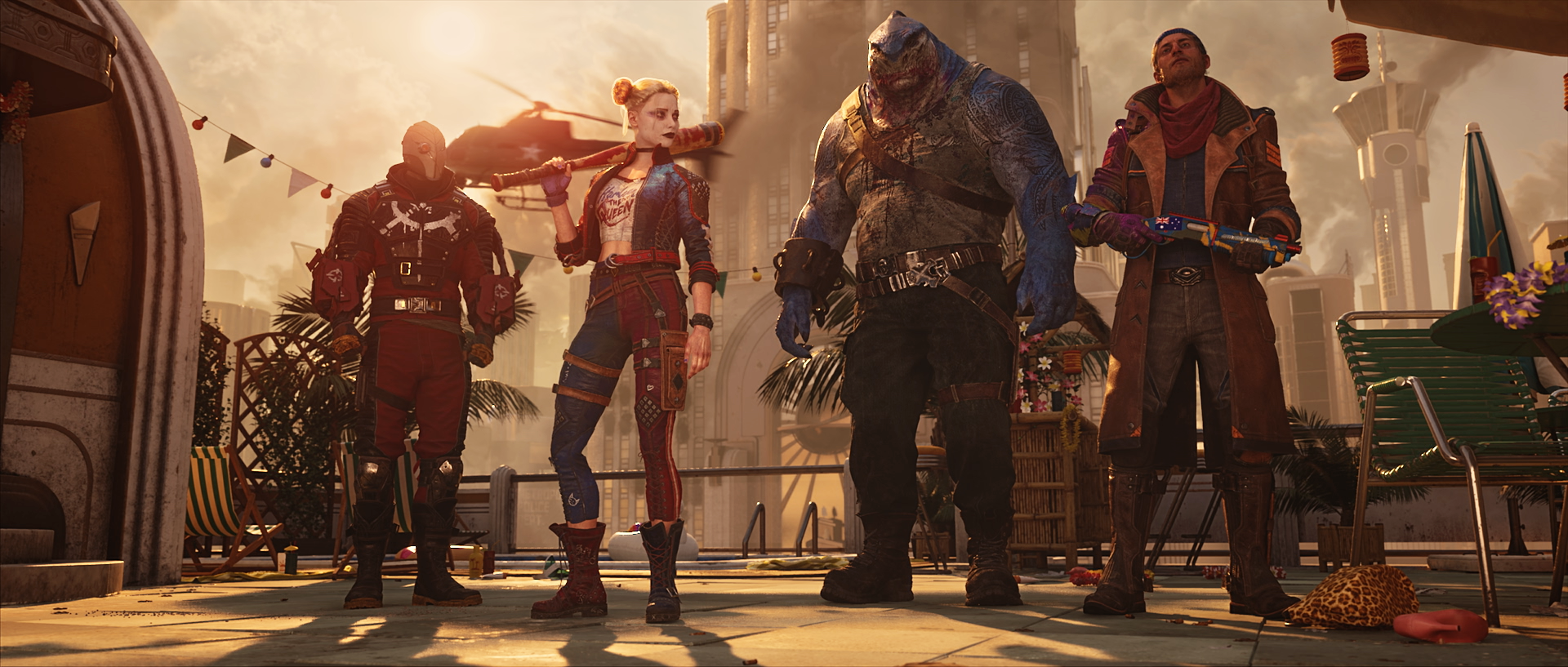
We’re The Bad Guys
Suicide Squad has been a franchise propelled into the mainstream thanks to its recent movies. Say what you will about either of them, but both have established just what they’re all about. There’s a mission that no heroes would risk their lives for, so send out the villains that are locked up in Arkham prison to do the dirty work – or die in the process.
Rocksteady minces no words with this premise, as you’re thrown into the lives of Deadshot, Harley Quinn, Captain Boomerang and King Shark, AKA Task Force X. Four misfit bad guys that now have a ticking timebomb in their neck (thanks to Amanda Waller) and the impossible mission of killing the Justice League.
Brainiac has seized control of them due to his mind control capabilities and is creating his homeworld out of the rubble of Earth. DC Comic fans will know just how formidable Brainiac is. He’s one of Superman’s archenemies and is often depicted in world-ending scenarios like this one.
The game sets these parameters clearly, making the stakes feel catastrophic. However, the gallows humour of Task Force X as well as Rocksteady’s deep understanding of DC characters shine through this apocalyptic story. As a fan of the Arkham franchise, not having played one in 10 years, I’m quickly reminded of the calibre of storytelling Rocksteady can pull off.
Soon enough, after a clumsy tutorial, you set out into the open world of Metropolis as one of the four members of TFX. I started off playing as Deadshot as I felt his traversal mechanics and Boba Fett-style gunplay of jetpacking and thwacking was the quickest to pick up and play.
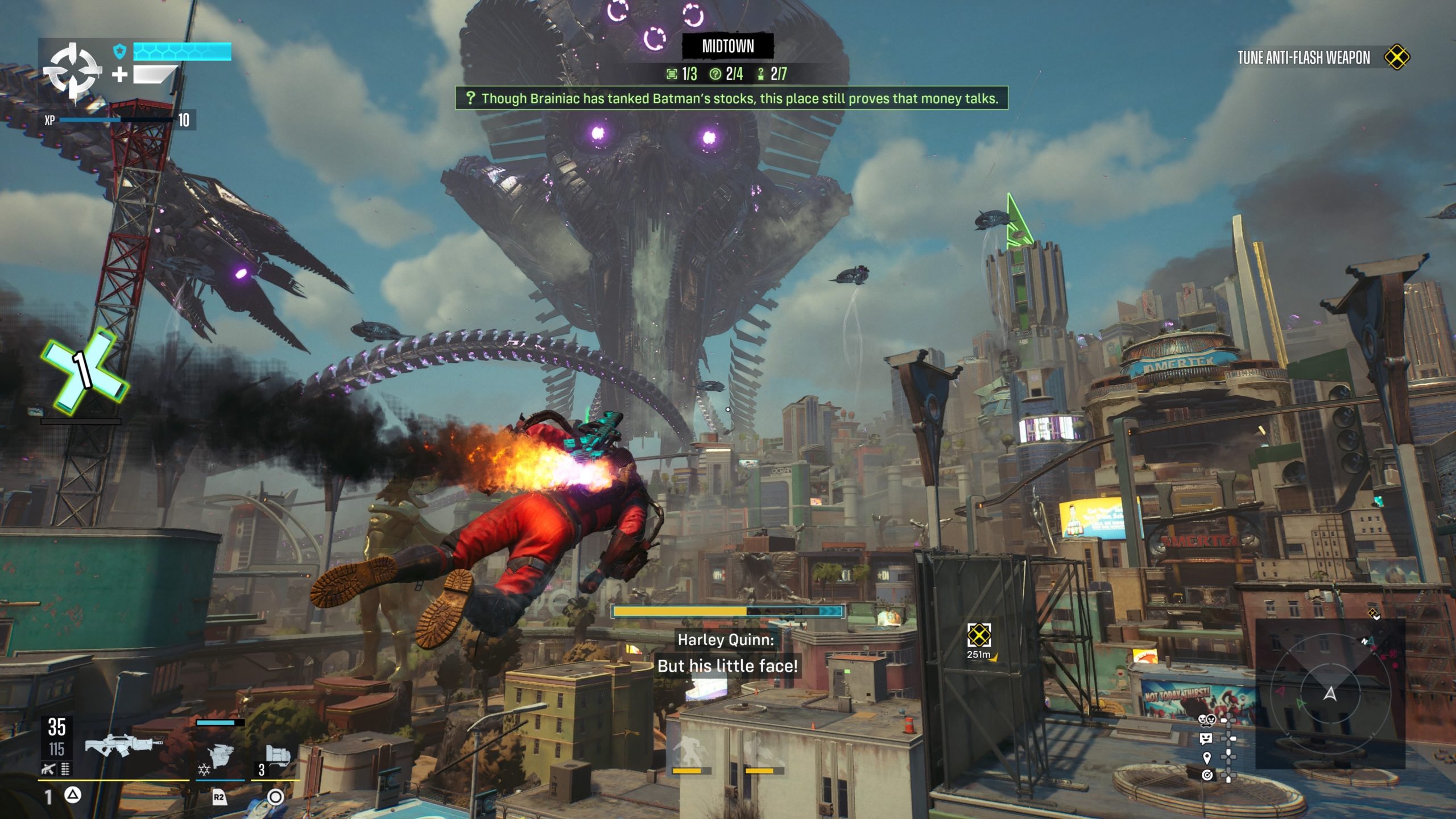
Into The End
Every member has a different set of moves though, using stolen Justice League equipment to help. Harley swings with a batclaw and glider, Boomerang teleports in the direction you throw his boomerang and King Shark can jump far or high when charged up. There’s a flow to these movement mechanics that requires a bit of learning to get to grips with, giving an inherent skill floor to navigate Metropolis better. They can also be upgraded in the game’s skill tree, which I’ll get into later.
Once you’re fully out into the world, you’ll have your main missions that’ll continue on the story, as well as side missions known as Squad Support. Squad Support missions help in unlocking better tiers of equipment that you’ll use on the battlefield. New guns, new chips to change damage modifiers and upgrade your shield (health) and new afflictions, which are damage types like freeze or frenzy. Despite the rewards differing on the types of mission – even the main ones – you are more or less doing the exact same select few.
The task will vary from protect the “flags”, protect the moving payload, acquire and retrieve or kill as many bad guys-type missions. As generic as they are, the core gameplay of zipping around the map and shooting is an addictive aspect to Kill The Justice League. It’s taken me around 14 hours to get to the end-game portion of the game, as I was doing a lot of side content to get an overall feel and not rush the story. It was only by around hour 10 did I started to get frustrated with the gameplay; not because of the monotony but actually the stipulations tacked on top of a mission I’ve beaten 20+ times already.
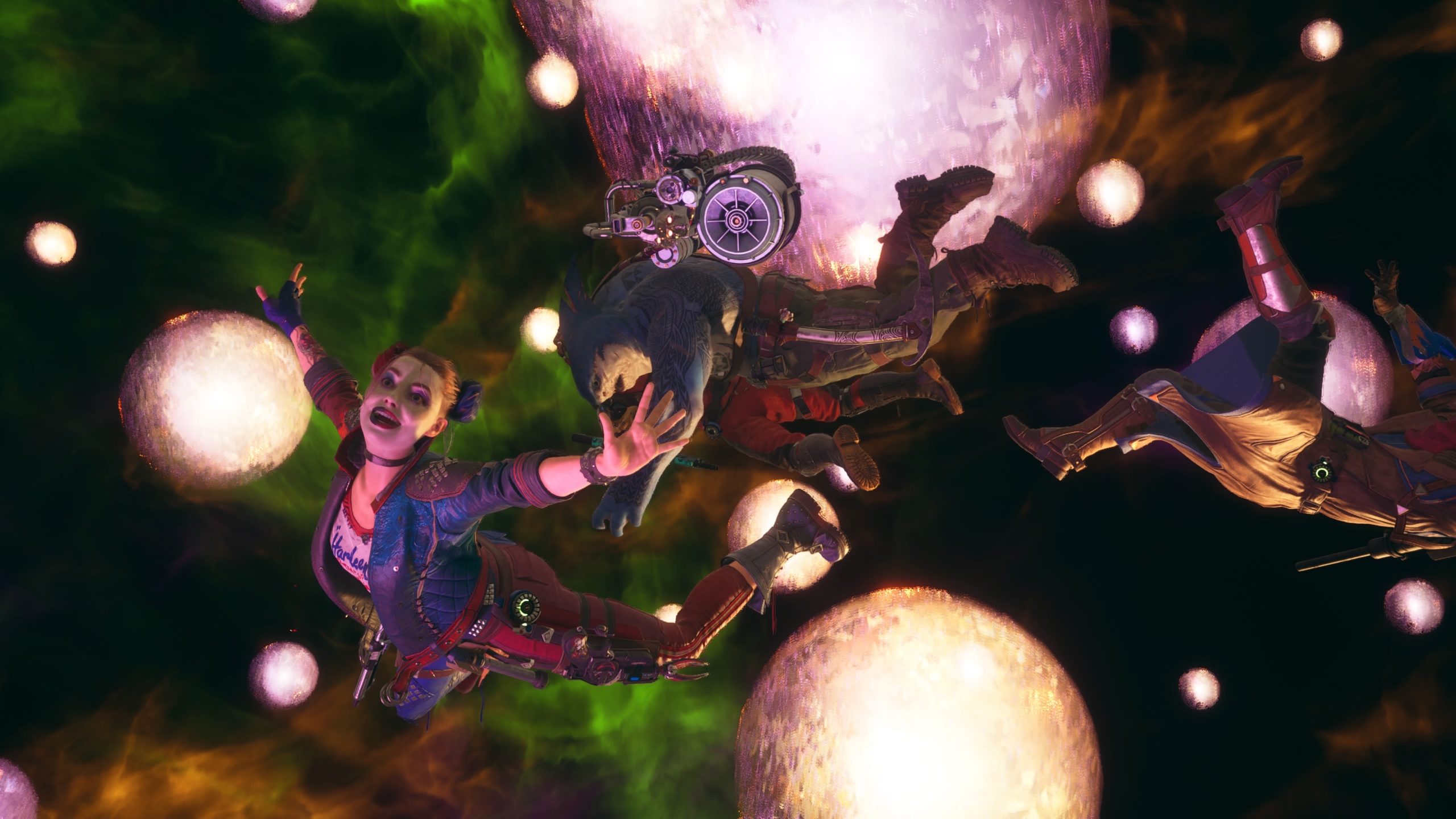
The Cycle of Violence
Enemies are lacklustre, generic spawns of Brainiac. You have standard troopers, snipers, big hulking grunts and then vehicles like a tank or helicopter. As you progress through the missions, these generic enemies get abilities that mimic the superheroes in the game, and then the mission objective will specify you can only use a certain type of attack to do damage.
This was when the party was over for me, it became so unfun to play as I was taking all the enemy aggro and dying. I started to realise that the game is now relying more on team cooperation between humans because the bots were not cutting the mustard anymore. I want to preface that the core gameplay is genuinely fantastic. The fact that you have four distinct playabilities, whilst sharing the snappy and responsive gunplay into the mix makes for playing out the same few missions mostly tolerable.
Melee attacks can be used to break barriers, juggle lighter foes or even help regain shield, adding an extra layer of switching up your move set, whilst mostly staying off the floor and fighting. Outside of melee weapons all the gear can be equipped by any of your members which is a simple but great addition to a game of this genre. No more beating missions and acquiring gear for a character you’re not using!
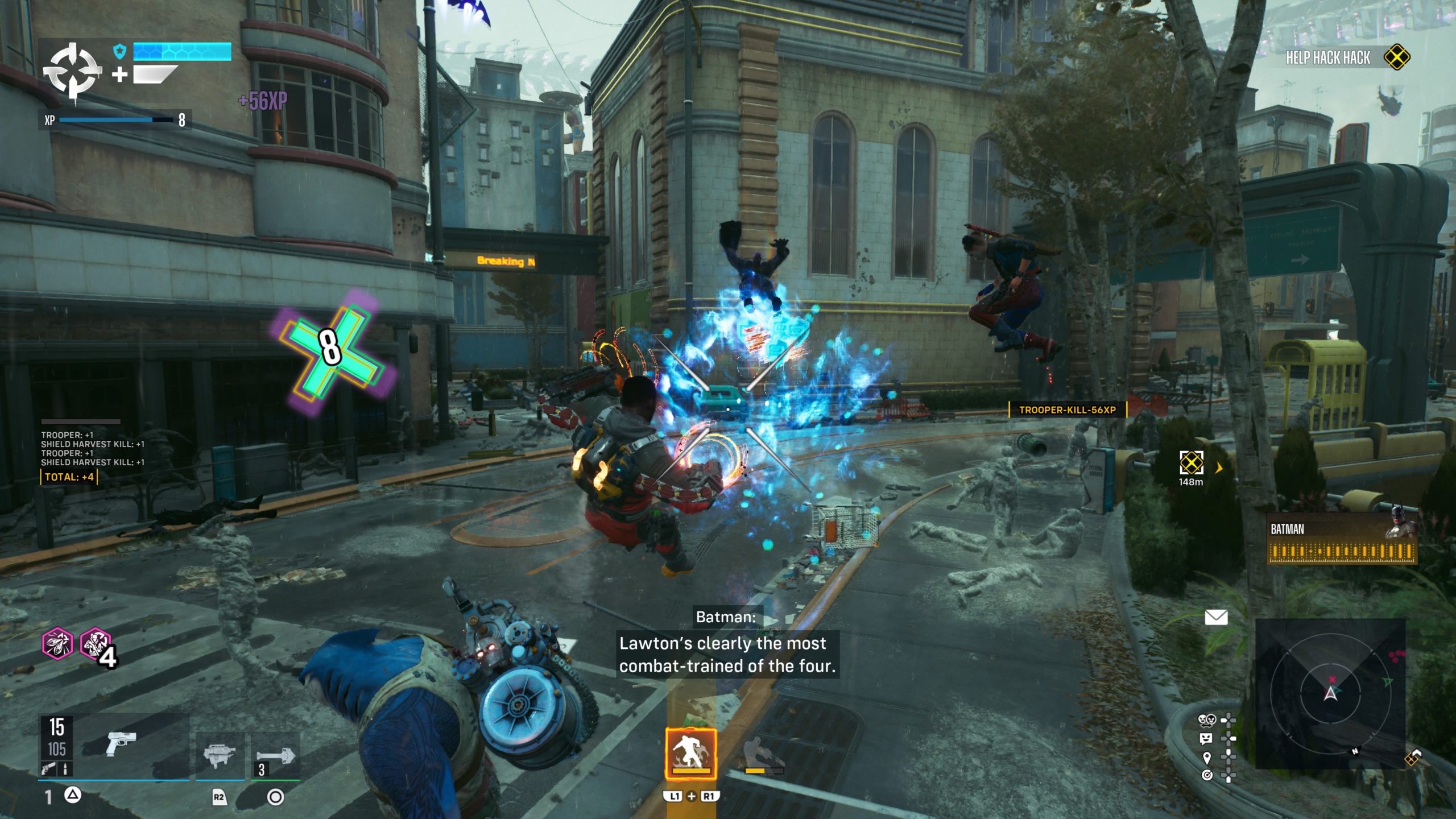
Gimme The Loot
Speaking of gear, you have two slots for your slew of different firearms, a shield chip, a modifier chip, a grenade and melee weapons. All of these will have a rarity from common to infamous (green to red) and the better the rarity the bigger the numbers are for its DPS, critical hit chance and a random modifier or too. Pretty par for the course in a live service game, the rarer weapons are ugly as hell and there’s no transmogging in the game so you can keep your favourite look whilst changing guns.
On top of that, some modifiers can suck the living fun out of a flashy new gun by negating damage output entirely, in service for a gimmick like freezing them in time. You can reroll the stats at home base easily enough, but modifiers like that just feel out of place entirely. Whilst guns have an OK variety that are made more exciting with its stat buffs, the outfits (or lack thereof) are a huge disappointment.
It’s cool to see that the outfits are just cosmetic and don’t add to the minutiae of juggling stats, but they are sorely lacking in any real customisation. If it wasn’t for having the Deluxe Edition provided, I’d have only two outfits with a couple of different styles and colour swatches.
Looter shooters by design have a treasure trove of customisability, incentivising going for missions you otherwise would have or playing in a specific style you’ve not tried yet. Instead, there’s a bleak item shop with different variations of skins, emotes and soon-to-be banners. Using your real money, you can acquire Luthercoins to purchase them; handy that the required amount to buy a skin is 100 off one of the cheaper options to purchase.
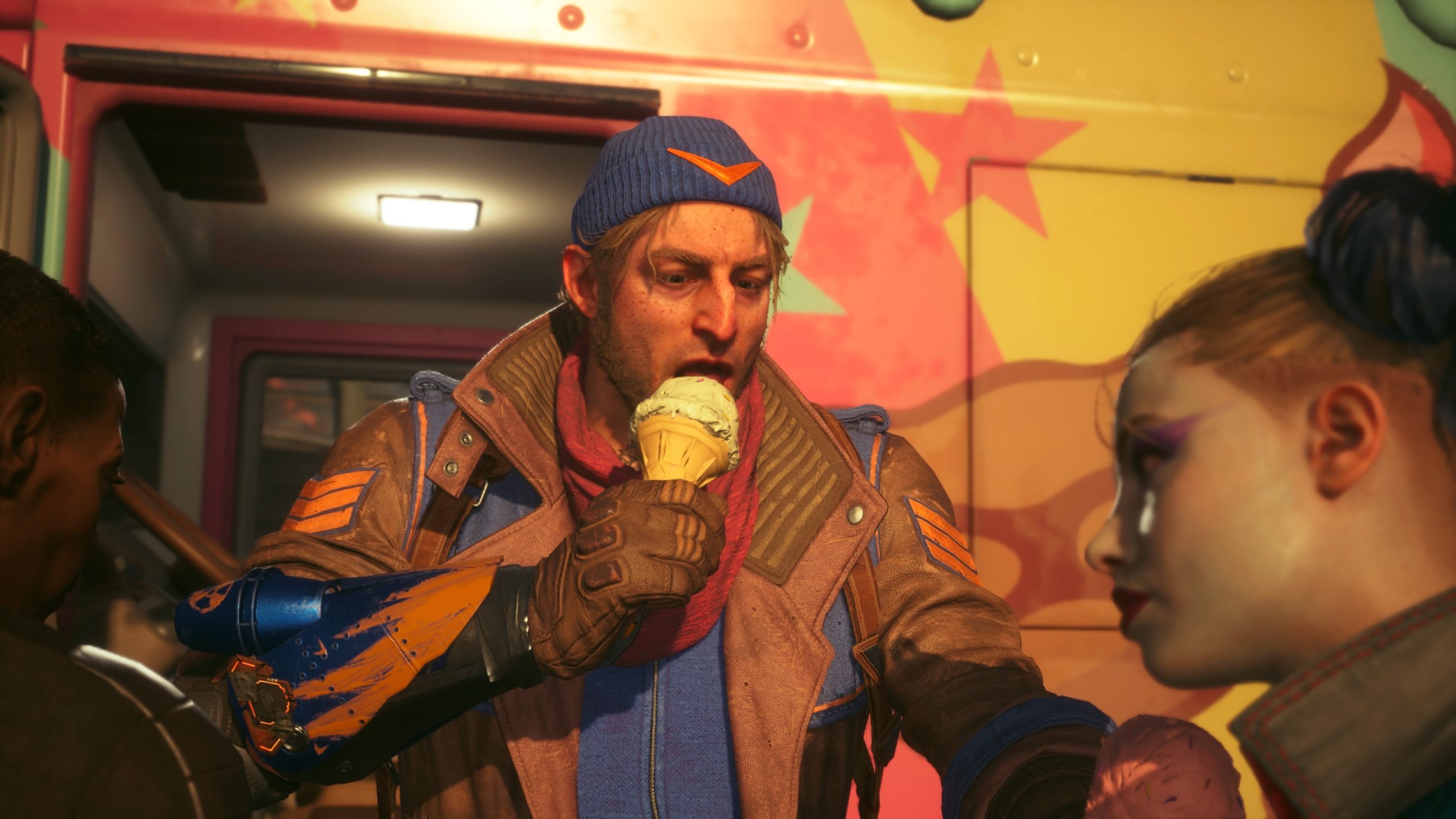
The World Is Theirs
I know some aren’t bothered by this pseudo-economy as games like Fortnite make an absolute mint, but the core of this game is so unaccommodating to the business model, that it just whiffs of shoehorning monetisation. That is, until the end game. By the time you get near the end of the main missions, you’ll see exactly where the game is going and become that live service title we saw in the lead-up to the release.
Up until this point, however, I had a genuine blast with Kill The Justice League. The story takes turns I didn’t expect, the characters are well-realised lovable anti-heroes, that have some of the best facial animations on the market, hands down. Heck, despite the copy-and-paste mission structure, I just had fun blasting Brainiac’s colourful yet generic minions.
The end game then presents you with the same type of missions, only harder, to get some of the best loot in the game. Then a boss fight that you’ll repeat with a slight variation, making it feel very rinse and repeat. To Rocksteady’s credit, they’ve woven in legitimately impressive story reasons to explain every game mechanic, resulting in a believability that games of this genre really don’t need to bother with.
Despite these efforts though, this is where the game has lost me. I don’t fancy the grind this time around, because the game I see is another premium Rocksteady game as a co-op shooter but with a bunch of monetary giblets to make money.
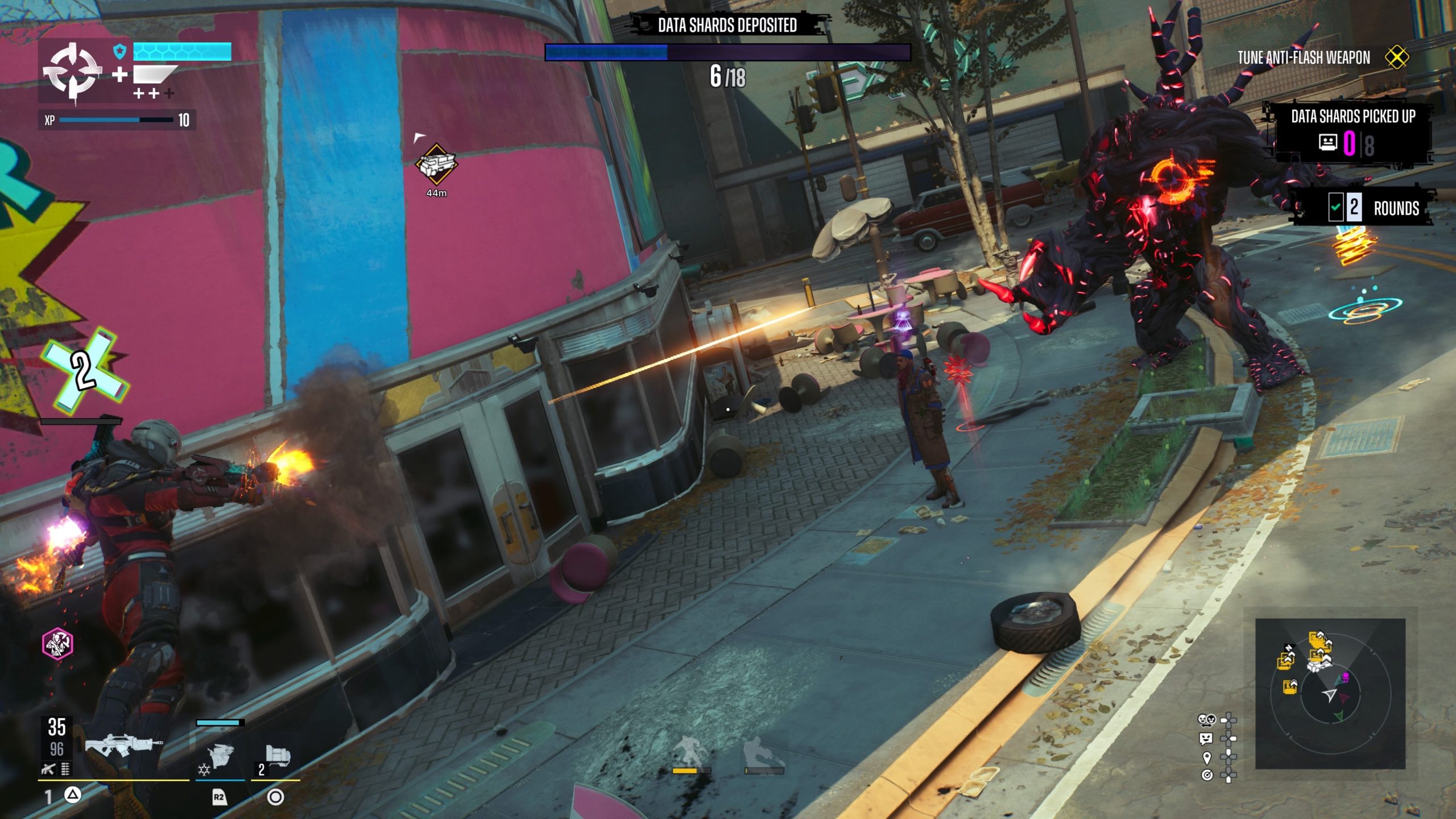
Dead Reckoning
Visually speaking, Suicide Squad: Kill The Justice League is a technical marvel. Metropolis, as a playground, is so dense with various buildings to traverse through. Using the ’50s golden age style you’d have seen in the Arkham series but with a lot more colourful flare. On top of its glorious fidelity, it runs exceptionally well at a steady 60 frames per second, even when there is so much going on screen. It’s genuinely one of the most technically impressive games for the current gen.
So, if you’ve got this far, you know how at odds I am with the game as a whole. Kill The Justice League feels like the result of a game changing direction way too late in its development cycle and rolling with it anyway. The story is fun yet meaningful to Rocksteady’s legacy with DC; the gameplay is frantic but razor-sharp when not too much is going on and from a technical standpoint incredible.
However, as a live service game, it falls absolutely flat for me. The grind for the best loot at the endgame feels inconsequential, making it feel entirely pointless to carry on after credits. It’s like the curtains have closed on stage but you can still hear the actors behind it playing out a scene. I can also see this finding an audience. Some of my gripes may mean nothing to some people which is great too. If the game continues to get more content/support there may just be life after death for the Justice League and the Suicide Squad.
Suicide Squad: Kill The Justice League has an identity crisis. The core gameplay is diverse and addicting. The tonally grim but hilarious story showcases Rocksteady at their best, and the game is technical wizardry. However, anything live service about the game entirely complicates what is otherwise a winning formula that not even Task Force X can save.
Suicide Squad: Kill The Justice League is out now for PlayStation 5 (review platform), Xbox Series X|S and PC via Steam.
Developer: Rocksteady Studios
Publisher: Warner Bros. Games
Disclaimer: In order to complete this review, we were provided with a promotional copy of the game. For our full review policy, please go here.
If you enjoyed this article or any more of our content, please consider our Patreon.
Make sure to follow Finger Guns on our social channels –Twitter, Facebook, Twitch, Spotify or Apple Podcasts – to keep up to date on our news, reviews and features.
